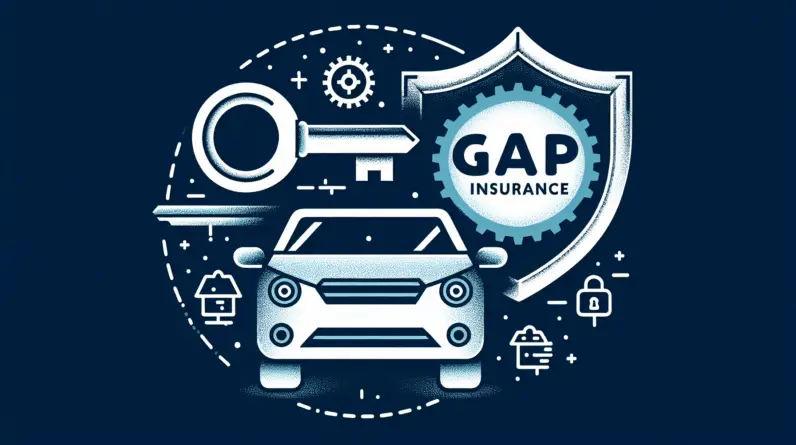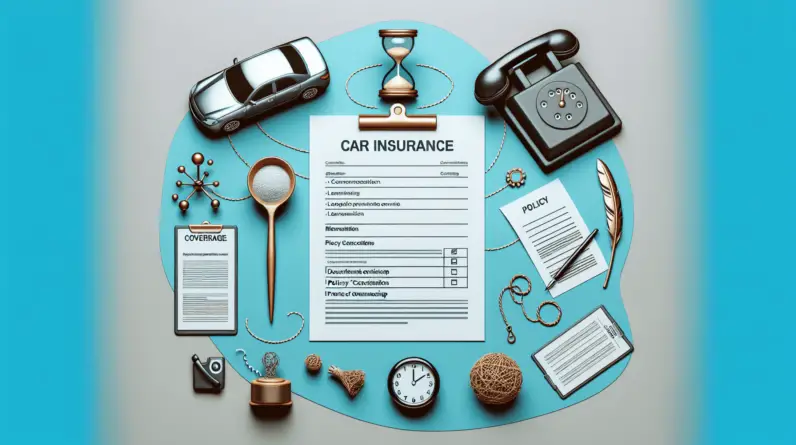
Car insurance can sometimes feel like a heavy burden on your wallet, leaving you wondering what exactly makes it so pricey. There are several factors that contribute to the high cost of car insurance, including your driving history, the type of car you drive, your age, and even your location. In this article, we will explore these factors and shed light on why car insurance can be an expensive investment. So, grab a cup of coffee and let’s uncover the secrets behind those hefty premiums.
1. Vehicle Factors
1.1 Vehicle Type
The type of vehicle you drive can have a significant impact on your car insurance rates. Insurance companies take into consideration factors such as the cost of repairs and replacement, safety features, and the likelihood of theft when determining the premium for your vehicle. Generally, sports cars and luxury vehicles tend to have higher insurance rates due to their higher repair costs and increased risk of theft. On the other hand, sedans and family cars are typically less expensive to insure.
1.2 Vehicle Age
The age of your vehicle is another important factor that affects your car insurance rates. Typically, older cars have lower insurance premiums because they are usually less expensive to repair or replace. Newer vehicles, especially those that are leased or financed, often require comprehensive coverage and have higher insurance rates due to their higher value and repair costs. It is important to keep in mind that as your vehicle ages, its value and insurance rates may decrease.
1.3 Vehicle Value
The value of your vehicle is a significant consideration for car insurance companies. The more expensive your car is, the higher your insurance rates will be. This is because insuring a high-value vehicle involves a greater risk for the insurance company. Additionally, the cost of repairs for expensive vehicles tends to be higher, leading to higher premiums. If you own a rare or vintage car, you may need specialized insurance coverage, which can also contribute to higher costs.
1.4 Safety Features
The safety features equipped in your vehicle can play a role in determining your car insurance rates. Insurance companies often offer discounts for vehicles that have advanced safety features such as anti-lock brakes, airbags, traction control, and electronic stability control. These features reduce the risk of accidents and injuries, resulting in lower insurance premiums. It is important to inform your insurance provider of any safety features in your vehicle to maximize potential discounts.
1.5 Repair Costs
The cost of vehicle repairs is a significant factor in determining insurance rates. If your vehicle is expensive to repair or if its parts are hard to find, your insurance rates may be higher. Insurance companies take into account the average repair costs for specific makes and models when calculating premiums. Additionally, modifications made to your vehicle that increase its repair costs, such as custom engines or paint jobs, can also lead to higher premiums.

2. Driver Factors
2.1 Age and Gender
Your age and gender are important driver factors that influence car insurance rates. Younger drivers, especially teenagers, are considered high-risk because they tend to have less driving experience and are more likely to engage in risky behavior on the road. As a result, insurance premiums for young drivers are generally higher. Additionally, statistics show that young male drivers are often involved in more accidents than their female counterparts, leading to higher insurance rates for young males.
2.2 Driving Record
Your driving record has a significant impact on your car insurance rates. Insurance companies consider factors such as the number of accidents you have been involved in, traffic violations, and any previous claims you have made. A clean driving record with no accidents or violations demonstrates responsible driving behavior and can result in lower insurance premiums. On the other hand, a history of accidents and traffic violations suggests a higher risk of future accidents, leading to higher premiums.
2.3 Credit Score
Although controversial, some insurance companies may consider your credit score when determining your car insurance rates. Studies have shown that individuals with lower credit scores are more likely to file claims and have higher insurance losses. As a result, insurance companies often see individuals with lower credit scores as higher risk, leading to higher premiums. It is important to maintain a good credit score to potentially qualify for lower insurance rates.
2.4 Annual Mileage
The number of miles you drive annually is another driver factor that can affect your car insurance rates. Insurance companies consider the average driving distance to assess the risk of accidents and the likelihood of filing a claim. If you have a long commute or frequently travel long distances, your insurance rates may be higher. Conversely, if you drive fewer miles each year, you may qualify for lower insurance rates. This is because individuals who drive less have a lower chance of being involved in accidents.
2.5 Occupation
Believe it or not, your occupation can also impact your car insurance rates. Certain professions tend to have higher insurance premiums due to the nature of their work. For example, jobs that require extensive driving, such as delivery drivers or traveling salespeople, may lead to higher insurance rates. On the other hand, individuals who work from home or have occupations with lower risk factors may qualify for lower insurance premiums. It is important to provide accurate information about your occupation when obtaining insurance quotes.
3. Coverage Factors
3.1 Deductibles
The deductibles you choose for your car insurance policy can impact your rates. A deductible is the amount you pay out of pocket before your insurance coverage kicks in. Opting for higher deductibles can lower your insurance premiums as it shifts more of the financial responsibility to you in the event of a claim. However, it is important to consider your financial situation and ability to pay the deductible in case of an accident.
3.2 Policy Limits
Policy limits refer to the maximum amount your insurance company will pay for each type of coverage in the event of a claim. Higher policy limits offer more comprehensive coverage but can result in higher insurance premiums. It is essential to determine the appropriate policy limits based on your assets and potential financial risks. Adequate coverage is crucial to protect you from high out-of-pocket expenses in case of an accident or damage to your vehicle.
3.3 Coverage Options
The coverage options you choose for your car insurance policy can impact your rates. Liability coverage is typically required by law and covers damages you cause to other vehicles or property. However, optional coverages such as collision and comprehensive insurance can significantly increase your premiums. Collision coverage reimburses you for damages to your vehicle resulting from accidents, while comprehensive coverage protects against non-collision incidents such as theft or vandalism.
3.4 Claims History
Insurance companies assess your claims history when determining your rates. If you have a history of filing numerous claims, insurance companies may view you as higher risk and increase your premiums. On the other hand, individuals with a clean claims history demonstrate responsible driving behavior and may qualify for lower insurance rates. It is important to carefully consider whether it is financially beneficial to file a claim or pay for minor damages out of pocket.
3.5 Usage-Based
Usage-based insurance is a growing trend that uses technology to monitor driving habits and adjust insurance rates accordingly. Insurance companies offer telematics devices or smartphone apps that track factors such as mileage, speed, braking, and acceleration. By analyzing your driving behavior, insurance companies can provide personalized rates based on your actual usage. Safe drivers who consistently demonstrate good habits may benefit from lower premiums with usage-based insurance.
4. Location Factors
4.1 ZIP Code
Your ZIP code plays a significant role in determining your car insurance rates. Insurance companies analyze local data on accident rates, theft rates, and population density to assess the risk associated with your location. Urban areas with higher crime rates and more traffic congestion tend to have higher insurance premiums compared to rural areas. Additionally, densely populated areas may have a higher risk of accidents, leading to increased insurance rates.
4.2 Traffic Density
The level of traffic density in your area can impact your car insurance rates. More congested areas tend to have higher accident rates, which can result in higher insurance premiums. Insurance companies analyze traffic patterns and accident statistics to assess the risk associated with specific regions. If you live in an area with heavy traffic or frequent accidents, you may experience higher insurance rates due to the increased likelihood of being involved in an accident.
4.3 Crime Rate
The crime rate in your area is another location factor that can affect your car insurance rates. If you live in an area with a high crime rate or a history of auto theft, insurance companies may consider your vehicle at a higher risk of being stolen or vandalized. As a result, your insurance premiums may be higher. It is crucial to park your vehicle securely and invest in anti-theft devices to mitigate the risk and potentially qualify for lower insurance rates.
4.4 Parking Situation
The availability and safety of parking in your area can also impact your car insurance rates. If you live in an area with limited parking or if you park your vehicle on the street, your insurance rates may be higher. Vehicles parked on the street are more susceptible to damage or theft, leading to increased insurance premiums. On the other hand, if you have access to a secure parking facility or a private garage, you may qualify for lower insurance rates.
4.5 Weather Conditions
The weather conditions prevalent in your area can influence your car insurance rates. Areas prone to extreme weather events such as hurricanes, hailstorms, or frequent severe winter conditions may have higher insurance premiums. This is due to the increased risk of damages to vehicles caused by such weather events. Insurance companies take into account historical weather data to assess the likelihood of claims resulting from weather-related damages.
5. Insurance Company Factors
5.1 Underwriting Process
The underwriting process employed by insurance companies can impact your car insurance rates. Each insurance company assesses risks differently and establishes their own underwriting guidelines. This means that even if you have similar information and driving history, different insurance companies may provide different quotes. It is important to compare quotes from multiple insurance providers to find the best coverage and rates for your specific needs.
5.2 Claims Process
The claims process of an insurance company can significantly impact your overall experience. Insurance companies with a streamlined and efficient claims process ensure that your claims are processed quickly and accurately, minimizing any inconvenience or delays. It is important to research and read reviews about an insurance company’s claims process to ensure that you choose a company known for its prompt and fair claim handling.
5.3 Customer Service
The level of customer service provided by an insurance company is an essential factor to consider. Access to knowledgeable and helpful customer service representatives can make a significant difference in your insurance experience. Reliable customer service ensures that your questions and concerns are addressed promptly and that you receive assistance when needed. Excellent customer service creates a positive and supportive insurance experience.
5.4 Financial Strength
The financial strength of an insurance company is crucial to consider when selecting car insurance coverage. A financially stable company has the resources to pay out claims promptly and fulfill its obligations in the event of an accident. Independent rating agencies provide financial strength ratings for insurance companies, allowing you to assess their stability and ability to meet future financial obligations.
5.5 Market Competition
Competition within the insurance industry can also affect car insurance rates. In a competitive market, insurance companies often offer competitive rates and discounts to attract customers. Taking advantage of this competition by comparing quotes from multiple insurance providers can help you find the most affordable rates for the coverage you need. It is essential to regularly review your insurance options as rates and discounts may change over time.
In conclusion, several factors contribute to the cost of car insurance. Vehicle factors such as the type, age, value, safety features, and repair costs all play a role in determining the premium. Driver factors including age, gender, driving record, credit score, annual mileage, and occupation also impact insurance rates. Coverage factors such as deductibles, policy limits, coverage options, claims history, and usage-based insurance can affect the cost. Location factors, such as ZIP code, traffic density, crime rate, parking situation, and weather conditions, also influence insurance rates. Additionally, insurance company factors, including the underwriting process, claims process, customer service, financial strength, and market competition, contribute to the overall cost of car insurance. By understanding these factors, you can make informed decisions to find the best car insurance coverage that suits your needs and budget.






